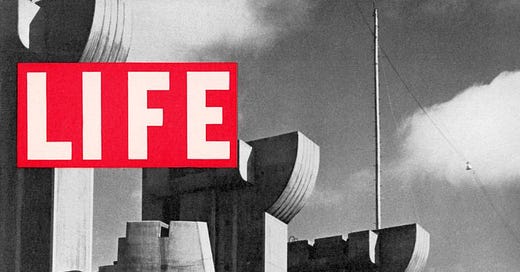The 75th Congress of the United States (1937-1939) passed the Bonneville Project Act, which was signed into law by democrat President Franklin Roosevelt. In the 75th Congress democrats held 334 out of 435 seats in the House, and 78 out of 96 seats in the senate. Montana’s senators were Burton Wheeler and John Erickson, both democrats. Montana’s representatives in the House were Jerry O’Connell and James O’Connor, both democrats.
Congress established the BPA in 1937 to market and distribute electricity from the newly constructed Bonneville Dam on the Columbia River, which benefitted rural areas. Two of Montana’s hydroelectric dams are included in the Columbia River Power System, Libby Dam and Hungry Horse Dam, which together contribute about 1 gigawatt of nameplate generation.
Section 4(a) of the Act, the preference clause, directed BPA to give preference and priority to public bodies and cooperatives in delivering electricity. Section 6 established the principle of uniform or “postage stamp” rates for BPA power, meaning the rate is a fixed charge no matter how far the energy has to be transmitted from its source. This was a deliberate effort to counter the monopolistic practices and high rates of private utilities and to bring affordable electricity to rural areas.
Speaking in Glasgow, Montana, in October of 1937, President Roosevelt included all of Montana’s solid democratic representatives, but not Burton Wheeler, on a tour of the Fort Peck Dam, the world’s largest earth-fill dam, which was nearing completion. Roosevelt was punishing Wheeler for standing up to him on the court-packing plan. Once upon a time, Montana’s elected representatives had spines. Fort Peck Dam was captured on the first cover story of Life Magazine:
Today, BPA’s generation serves large areas of Montana. Western Montana electric coops including Flathead, Ravalli, Missoula, and Lincoln electric coops, have all-requirement contracts with BPA. Co-ops in Montana get 329 average megawatts of electricity from the Columbia hydropower system, which is enough to serve 200,000 residents.
BPA’s transmission system is integral to delivering power across the Northwest and Montana. More than 90% of Montana’s power load is delivered through the U.S. Western grid.
Montanans served by these electric cooperatives pay electric rates roughly half of the rates paid by Montanans served by for-profit investor owned utilities.
A century after the hydroelectric power development and BPA, the republicans Big Beautiful Bill does the opposite of what democrats did for energy in Montana in the 1930s.
In spite of the fact that clean energy added more than 90 percent of all new capacity to the U.S. grid in 2024, republicans voted to kill this investment, hurting Montana in the process. The Big Beautiful Bill will dramatically slow development of new generation in Montana, during a time of rapid growth in demand.
The republicans Big Beautiful Bill will have the following impact in Montana:
Decrease new energy generating capacity in Montana by nearly 2 gigawatts in the next 10 years;
Increase annual energy bills by $98 million across Montana households annually in 2030;
Increase energy costs by more than $270 million by 2035, for a total of $1 billion during the budget window of 2025 to 2034;
Cost Montana’s workforce 4,100 jobs in 2030 and nearly 2,500 jobs in 2035;
Increase air pollution, particularly from power plants and vehicles. Emissions would increase by over 0.5 million metric tons of carbon dioxide equivalent (Mt CO2e) in 2030, rising to over 1 Mt CO2e in 2035 – the equivalent of adding 220 thousand cars to the road.
Changes and terminates existing clean energy tax credits passed by Congress in 2022, which to date have generated $2 billion in new private-led investment across 12 domestic energy and manufacturing facilities in Montana. $3.5 billion of outstanding private investment has been announced across 35 facilities in Montana.
All four of Montana’s federal delegation are republicans, and every one of them voted in favor of the Big Beautiful Bill.
Here is a comparison of democrat and republican priorities for Montana:
A century after the democrats forward-looking investment in public power, the republicans Big Beautiful Bill pivots, benefitting investor-owned utilities and wall street, increasing rates for We the People.
The story of Montana is typical of the west. Find rich natural resources that bring a profit, gold, silver, copper, coal, water, wind, and send it out of state for money. Only We the People can exert the power needed to ensure that our treasure benefits us.
Montana, and the west, have a powerful story of the importance of a federal role in developing and using our resources for the betterment of the people. The Big Beautiful Bill gives private corporations the profit from public resources.
We can change what happened this month.
All together.





ENRON is a good example of what happens when private corporations have control over our basic human needs and rights such as heating and electrfying our homes. The 1978 PURPA Act, 1992 Energy Policy Act, 1996 FERC order 888 all encouraged "capitalism" or unbridled greed take control of our basic needs and ENRON was happy to oblige. It wasn't until the lights went out in California that ENRON's greed ended it's rein of power over millions of people. The bottom line is "why should greed have control over our lives"? Fat cat billionaires on top squeezing us is simply not the way life should be lived.
My dad was Lake County representative during that time. I remember it well. I have a lot to learn about dams. He was really proud of the work that was done then, and I am not so sure it was well thought out about the consequences. He was also a republican. The old time Republicans. I most certainly am not. He thought we would think independently. That was a good gift.